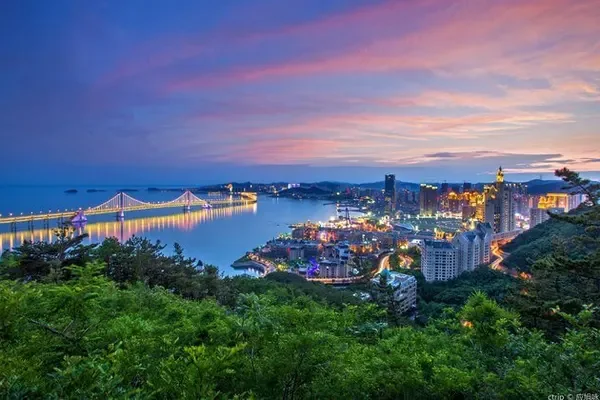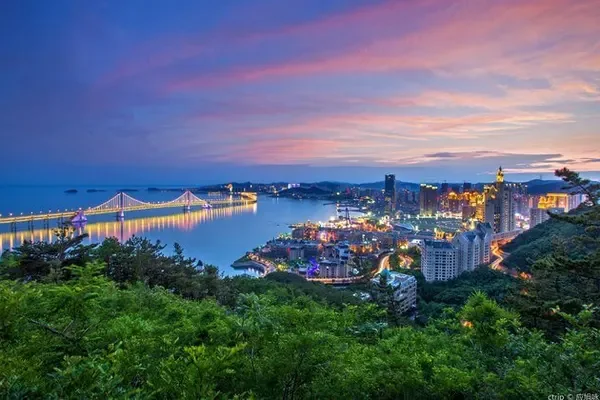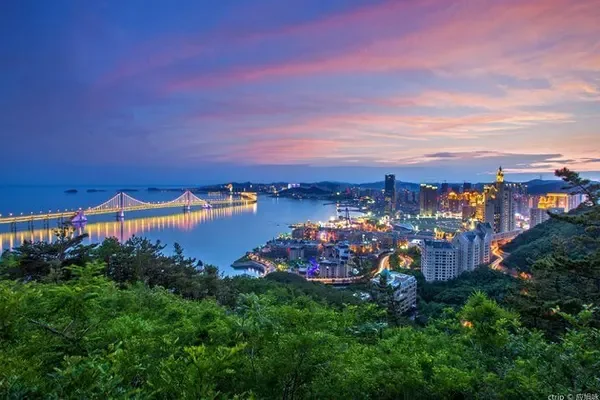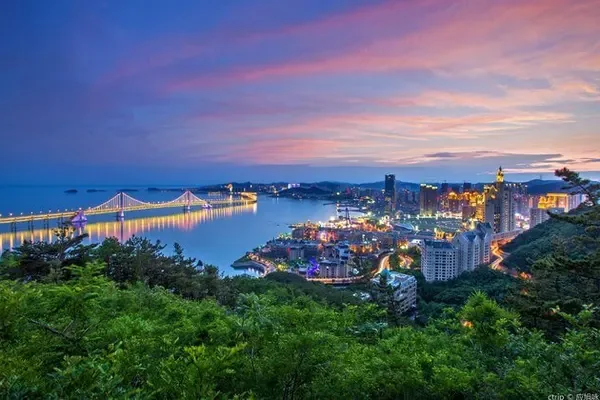On June 19, 2021, the original plan was to take the Yizhao Highway today. The hotel in Zhaosu County that night has already been booked, and two 5-seater off-road vehicles have been reserved (7-seater vehicles on the Yizhao Highway are prohibited). However, it was bad luck again, the Yizhao Highway had not yet opened, so we had no choice but to change the itinerary.
Yizhao Highway, a beautiful landscape avenue from Yining to Zhaosu, has a total length of 180 kilometers and only passes about 4 months a year. On this road, snow-capped mountains, forest seas, grasslands, and streams are all scenery from any angle. White clouds are within reach, as if walking in a cloud fairyland. It is one of the most beautiful roads in Xinjiang in summer and is known as the "Xiaoduku" highway.

Afterwards, I found out that the Yizhao Highway was officially opened to traffic on July 12, which is far from it! Borrow a picture from the internet.

Depart after breakfast, bid farewell to the beautiful and picturesque Sailimu Lake, and go to another beautiful place in Yili Prefecture - purple romance - lavender garden.

This is a section of Lianhuo Expressway along the Saili Lake, with green mountains and green waters, as beautiful as a picture scroll, but it is a pity that parking is not allowed.

In a short period of time, before you can see enough of the beautiful scenery of lakes and mountains, the car has driven into the Sailimu Lake Tunnel.

After exiting the Sailimu Lake Tunnel, you will find the famous Guozigou Bridge. The beautiful scenery is dizzying.
Guozigou Bridge
The Guozigou Bridge is located in Huocheng County, Ili Kazakh Autonomous Prefecture, at the intersection of Guozigou and Jiangjungou, in the Guozigou Scenic Area in the west of the North Tianshan Mountains.

This is a snapshot of the bridge from the rear window of a car.

After turning a big bend, I sat on the bridge captured by the co-pilot's companion.

The valley captured by the side window of the car, the forest and the meadow are intertwined and symbiotic.

It is forbidden to stop on the bridge and on the highway to take pictures. When the car rotates under the bridge, the driver finds a place to park and asks us to get out of the car to take pictures. The view can be 360 degrees, but the pictures can only show a part. It is said that you can have a panoramic view of the bridge at the Songshutou viewing platform by the Sailimu Lake, but there is still about 20 minutes' drive from the bridge.

With a total length of 28 kilometers, Guozigou used to be the throat of the northern route of the ancient Silk Road, and is known as "the first scene in Yili". At the turn of spring and summer, this place becomes the most beautiful mountain scenery in western Xinjiang. You can see the forest belts, grasslands and the undulating layers of mountains, and there is still snow on the top of the mountains in the west that will never melt.

The completion of the Guozigou Bridge has solved the problem of difficult travel in the Ili River Valley, enabling Yili Prefecture to reach Urumqi all-weather and quickly, which plays an important role in the stability and economic development of the border areas.

Here is a short video
I borrowed a picture from the Internet. I don’t know if this picture was taken at the viewing platform, but I can see the whole picture of the bridge. The peaks and ridges overlap, the canyons turn, the vegetation is lush, the scenery is magnificent, the bridge dances among the mountains, and the mountains and rivers set off the bridge, complementing each other and forming a harmonious whole.

Borrowing an aerial aerial picture from the Internet, the shape of the entire bridge and its extension line can be seen at a glance. The several turns through the canyon are like a magic pen, with smooth curves and free movement. Overlooking the bridge from a high altitude, it is even more spectacular and majestic.

Lavender Manor
Lavender is native to the Mediterranean region of Europe and the southern foothills of the Alps. Provence in France is the most famous and almost everyone knows it. In the 1960s, Ili Kazakh Autonomous Prefecture in western Xinjiang began to introduce lavender, and the current planting area has reached 50,000 mu.

Surrounded by mountains on three sides, Yili enjoys abundant sunshine, humid climate, and large temperature difference between day and night, creating fertile fields for thousands of miles, rich grass and sweet water, rich products and unique resources. In addition, there is a rich history, simple culture, and strong ethnic customs. The multi-ethnic Yili River Valley has geographical and climatic conditions similar to those of the Mediterranean Sea, and has become China's "Lavender Hometown".

Along the way from Sailimu Lake to Yining, you will see endless lavender gardens, among which Huocheng County is the most famous. Every June, Huocheng will hold the Lavender Festival, when the sea of flowers will fill the sky and crowds will surge, making it a popular tourist destination in Xinjiang.

The lavender in Ili is mainly distributed in several regiments of the 4th Division of the Yili River Valley Corps and Sangong Township in Huocheng County. Among them, the 65th regiment and Sangong Township are the "Hometown of Lavender in China" named by the state. The most famous places to watch lavender are Jieyou Princess Lavender Garden, Keguerqin Lavender Base, Hanjia Princess Lavender Garden, etc.

In addition to large lavender gardens, Huocheng also has many farms growing lavender. The driver took us to a farm lavender garden with ease. The area is not very large, not endless, but the environment is quiet and there are few tourists. You can take pictures as you like without being disturbed by others.

It is confirmed from the photo information taken by the mobile phone that this place is located in the "Hometown of Lavender in China". There are Lucaogou Town, Changshang Liangzi Village and Sigong Village nearby, and it is not far from the famous Princess Jieyou Lavender Farm.


Lavender is a favorite of the ladies who come prepared and in good spirits. Here is a sea of flowers, full of purple romance, here is a world of beauty, it makes people want to leave, but all tourists who come here will be intoxicated in the sea of purple flowers, relaxed and happy, and intoxicated, and they will involuntarily admire: here is "" Provence in China".






In summer, the lavender field in Ili blooms, and the flowers are fragrant for ten miles, and the whole Ili River Valley has become a world of aromatherapy. The blooming season is also the season when people are busy and singing. You can often see such a scene: many people are harvesting lavender flowers while singing, and young men and women are brewing love in this beautiful season.

It is said that Ili lavender blooms in two seasons. The first season is from the end of May to mid-June, and it is harvested at the end of June; the second season is from the end of July to August, and it is harvested again at the end of September.




Khorgos National Gate
Horgos Port is the largest land and railway comprehensive port in Xinjiang. It is located in Horgos City, Ili Prefecture, across the Horgos River from Kazakhstan. Horgos, which means "the place where the camel caravan passes", was an important stop on the North Road of the ancient Silk Road as far back as the Sui and Tang Dynasties.

This is the original old country gate (fifth generation), and now it has become an exhibition hall, with a ticket of 30 yuan. It mainly introduces the history of the Silk Road. There is a Chinese 324 (1) boundary marker, which is after the completion of the Sino-Kazakh boundary survey in 1997. established. China and Kazakhstan are bounded by the Khorgos River and connected by a boundary bridge.

In the Guomen Scenic Area, there is a stele pavilion with an old boundary stele standing in the middle.

Korgos Port has a customs clearance history of more than 130 years. It is the earliest port opened to the west in my country. It is also the closest and most convenient window to Central Asia, West Asia and even Europe. It is also the Yihuo Railway, Lianhuo Expressway, and 312 National Road. , The origin and destination of the China-Central Asia natural gas pipeline.

duty free city

The building houses several management committees of local government departments.


China Kazakhstan Travel Shopping City

I found a photo of the sixth-generation Xinguomen on the Internet. The Xinguomen has adopted advanced inspection equipment.

Yining
13:50, enter Yining City. Yili is named after the Yili River, known as Yilie, Yili, and Yili in history. It was named Yili during the Qianlong period of the Qing Dynasty, and it is known as "Jiangnan beyond the Great Wall".

Yining has no severe cold in winter and no scorching heat in summer. It leans against the snow-capped peaks of Tianshan Mountain in the north and faces the Yili River in the south. As the capital of Ili Kazakh Autonomous Prefecture, Yining City has been a frontier flower since ancient times, quietly blooming in the northern border of the motherland.

Yili Grand Bazaar.

Ili Kazakh Autonomous Prefecture was established in November 1954. It governs Tacheng and Altay and 11 directly subordinate counties and cities. Its capital is Yining City. The "Ili" usually referred to refers to the direct area of Ili Prefecture (excluding Tacheng and Altay areas), with an area of 56,500 square kilometers.


Kazanqi Folklore Tourist Area
Stroll through the streets of Yining and come to the Kazanqi Folk Custom Tourist Area in the Old Town of Yili. The previous homework was not deep, and Yili was not the key point. I knew nothing about "Kazanqi", and even heard the name for the first time. Kazanqi is an old street in the old city of Yining. It retains the original dwellings, folk customs and customs to the greatest extent. It is a cultural tourist attraction integrating rich culture, honest folk customs and colorful customs.

The Great Hui Temple, formerly known as Ninggu Temple and Shaanxi Great Temple, was built in the 15th year of Qianlong in the Qing Dynasty (1760). It was built on the model of the Huajue Lane Mosque in Xi'an. There are double horoscope screen walls and gate towers.

In the tourist center of the folk tourist area, in Uighur, "Kazanqi" originally means a person who makes pots.

The streets and dwellings here basically maintain the traditional pattern and style, with both Central and Western characteristics and the traditional cultural style of "Talanch". The vast majority of houses and buildings use blue very frequently, either on the exterior walls, or on the roof, and more often on the door panels and window lattices. Blue becomes the main color and white is matched. The whole building looks delicate and pure.

There are row upon row of shops on the street, all dealing in ethnic characteristic commodities.


Sightseeing carriage is a scene of Kazanqi Folk Tourist Area, commonly known as "Hardik", also known as "Six Sticks", which is made up of six wooden sticks. It is very interesting to watch ethnic customs in a horse-drawn carriage, which is a good choice for tourists.

In addition to the horse-drawn carriages, the original Uyghur traditional life is preserved everywhere: antique Uyghur dwellings; poetic and picturesque small bridges and flowing water; tall and simple poplars; mellow milk tea and exquisite pastries; classical, traditional and lively Uyghur people The wedding; unrestrained, cheerful, and enthusiastic Maximilaifu....

Street gardens, small bridges, flowing water, flowers, pavilions, walking on this street will make you fall in love with this city at once.



Yizihaier Ice Cream, an Internet celebrity century-old ice cream shop, of course you have to go inside.

The interior of the store is elegantly furnished and has the charm of a modern fashion cafe. It is said that the handmade ice cream has a little milky smell because of the pure ingredients and no additives such as flavors.

Whether it is delicious or not is another matter, beautiful curtains, chandeliers, potted green plants, it is really rare to experience this kind of atmosphere and feel comfortable and comfortable.

Continuing to go shopping, I saw another century-old ice cream shop. Just came out of that store, no need to repeat the same mistakes, just admire the facade.

It happened that a sightseeing carriage passed by, and it turned out that the passengers were riding in this posture.

There are small bridges with white railings in front of every house, and there should be canals flowing along the street.

The old courtyard of a resident by the roadside, the courtyard door is wide open, obviously welcoming tourists.

Stepping into the courtyard, the sights are colorful. The blue and white houses have colonnades, the rooms are covered with ethnic floral carpets, the beds are covered with embroidered cushions, and there are a lot of glass products, tea sets and tea sets in the closets. Crystal products. Flowers and plants are dotted everywhere, grape trellises are indispensable, and the small courtyard is full of life and ethnic customs.





A small courtyard with various styles and pleasing to the eye.






Wandering around, I was attracted by the signboard of this yard: the food in the ancient courtyard is really helping me! It was nearly 17 o'clock at this time, and I had been running for a long time, and I hadn't had a serious meal. I only ate naan on the road (of course there were other snacks), and I was looking for a place to eat.

Standing outside the courtyard, I still hesitated, really not sure if the food here is right. Entering the courtyard, we are immediately overwhelmed by everything in front of us. The spacious courtyard, characteristic folk houses, and luxuriant grape trellises are exactly what we like.

After taking a seat and waiting for the food to be served, I wandered around the yard and took pictures at will.





Mainly noodles, I ordered a few dishes, as well as Wusu beer.



This plate of noodles alone is full of praise: rich ingredients, attractive colors, full portion, and good taste.

A few more authentic kebabs.


The food in the ancient courtyard is unforgettable, and it should be the most worthwhile place in Yining city.


I still have to go on my way, I can't stay for a long time, and I am reluctant to leave Kazanqi Folklore Tourist Area. If you know that the old town of Yining has such charm, you should really stay here for one night. In fact, after failing to take the Yizhao Highway, the original itinerary changed was to stay in Yili tonight, but the driver suggested that we should run a little longer today and live in Tekes County, so that the journey will be easier tomorrow.

Kazanqi Folk Custom Tourist Area is the only large-scale original ecological cultural scenic spot in northern Xinjiang with Uyghur ethnic customs as the main body. It covers an area of about 22.9 square kilometers, and the core area is 12.8 square kilometers. The Uzbek and other ethnic minorities live in concentrated areas with a population of nearly 100,000.

Turks City
I stayed in Yining City for more than 2 hours, and drove to Tekes County, where I will stay tonight, at 18 o'clock, that is, Bagua City. It was already past 21:00 when we checked into Lijie Phoenix International Hotel. It started raining as soon as we arrived, and then there was another burst of concentrated and dense rain. Now that we've checked into the hotel, we've already had dinner, and it doesn't matter how heavy the rain is.

At 21:40, after the rain, the sky cleared, and the sun had not yet set. The rooftop platform of the hotel was used to watch the sunset and the street view.


Lijie Phoenix International Hotel is located in Lane 1, Fourth Ring Road, Bostan Street, Tekes County, 1.3 kilometers away from the city center. Just in response to that sentence: if there is an advantage, there must be a disadvantage. Lijie is a tourist card created by Tekes County with all its efforts. It has a strong ethnic style and is worth seeing.



